Torn between Synthesia and InVideo in 2025? You’re not alone. AI video tools are more popular than ever, and for good reason—they help make professional video content faster and easier, whether you’re running a business, managing a brand, or simply trying to reach people online. But with so many AI video makers promising the best results, it’s tricky to know which actually fits your workflow.
Both Synthesia and InVideo stand out, but for different reasons. Synthesia shines with lifelike AI avatars that are perfect for training and corporate presentations, while InVideo makes quick work of marketing and social videos thanks to its massive template library and flexible editing options.
This guide compares Synthesia vs InVideo head-to-head. You’ll get a clear look at their features, pricing, user experience, and the types of projects each handles best. By the end, you’ll have the details you need to choose the tool that matches your goals without wasting time—or money—on the wrong fit.
What Is Synthesia?

If you’re thinking about switching up how you create corporate or training videos, you’ve likely seen Synthesia mentioned, especially in synthesia vs invideo comparisons. Synthesia is a powerhouse in the world of AI video production, all about making presenter-led video content with zero need for a camera crew or on-screen talent. Its core superpower? Instantly bringing scripts to life using digital humans (AI avatars) that sound and look professional. The platform is widely used by businesses, enterprises, and training teams that want polished presenter-led videos every single time they hit publish.
AI Avatar Technology
Synthesia’s biggest draw is its advanced avatar technology. Instead of hiring an actor, you select one of over 140 digital avatars—think of them as highly realistic stand-ins ready to read your script in dozens of languages. These avatars replicate tone, facial movement, and professional body language, making each video feel like it’s delivered by a real person.
But Synthesia doesn’t stop at generic avatars. You can even create a “digital twin,” which uses your own likeness for personalized communication, further setting it apart from most AI video tools.
- 140+ avatars with options for different professions and styles
- Custom digital twins for authentic, brand-specific presentations
- Voices and speech synced to look natural across all 120+ supported languages
If you’re interested in a deeper look at how the avatars work and the AI behind them, check out the Synthesia AI review 2025 for a feature breakdown and user verdicts.
Main Features
Synthesia is designed to remove as many steps from the video creation workflow as possible. Here are the key tools that keep it ahead of some alternatives:
- PowerPoint-to-Video Conversion: Upload existing slides and convert them to narrated, presenter-style videos in minutes.
- Script-to-Video Generation: Type in your training script, choose your avatar and language, and get a ready-to-use video.
- Multilingual Voiceovers: Reach teams globally with automatic support for over 120 languages and dialects.
- Simple Editing: Easily update scripts, swap avatars, or localize messages without ever needing a reshoot.
This approach is incredibly helpful if you regularly update onboarding processes or need annual compliance training refreshed.
Primary Users
Synthesia is the go-to for organizations that value speed, consistency, and a professional image. Its users include:
- HR and L&D teams rolling out new training modules
- Companies with large, distributed workforces needing multilingual updates
- Brand and communications teams pushing out regular company news presentations
- Trainers delivering consistent, on-brand video content without worrying about presenter drift
If your team needs to scale video production without hiring on-camera talent for every language, Synthesia is purpose-built for that job.
Pricing Approach
Synthesia’s pricing sits on the enterprise-friendly side, with different tiers based on usage, language needs, and custom avatar requirements. Many organizations appreciate having predictable costs when they need frequent updates or serve audiences in multiple markets.
You won’t find a one-size-fits-all price, but plans can be tailored so you only pay for what you’ll actually use. That control is welcomed by training teams managing regular content cycles.
For a side-by-side look at platform costs and where Synthesia stands in the AI race, you can review pricing comparisons on the official Synthesia vs InVideo page or check third-party reviews like this comparison at Fahimai.
Where Synthesia Excels
Synthesia really shines at presenter-style “talking head” videos, especially when consistency, professionalism, and language coverage are key. It’s less about fancy transitions and more about delivering a trustworthy face and voice for your scripts—perfect for training, learning, and internal comms.
- Maintains a uniform presenter style for all videos
- Reduces effort needed for localization or frequent updates
- Keeps viewers engaged by mimicking real people instead of robotic narration
If you’re comparing synthesia vs invideo for business content, this strength is tough to beat. You’ll find more feature highlights and updated rankings in the Top AI video tools 2025 roundup.
To sum up, if you want reliable, brand-consistent videos delivered at scale by digital presenters, Synthesia is a solid bet—especially if reaching global audiences efficiently is one of your top priorities.
What Is InVideo?
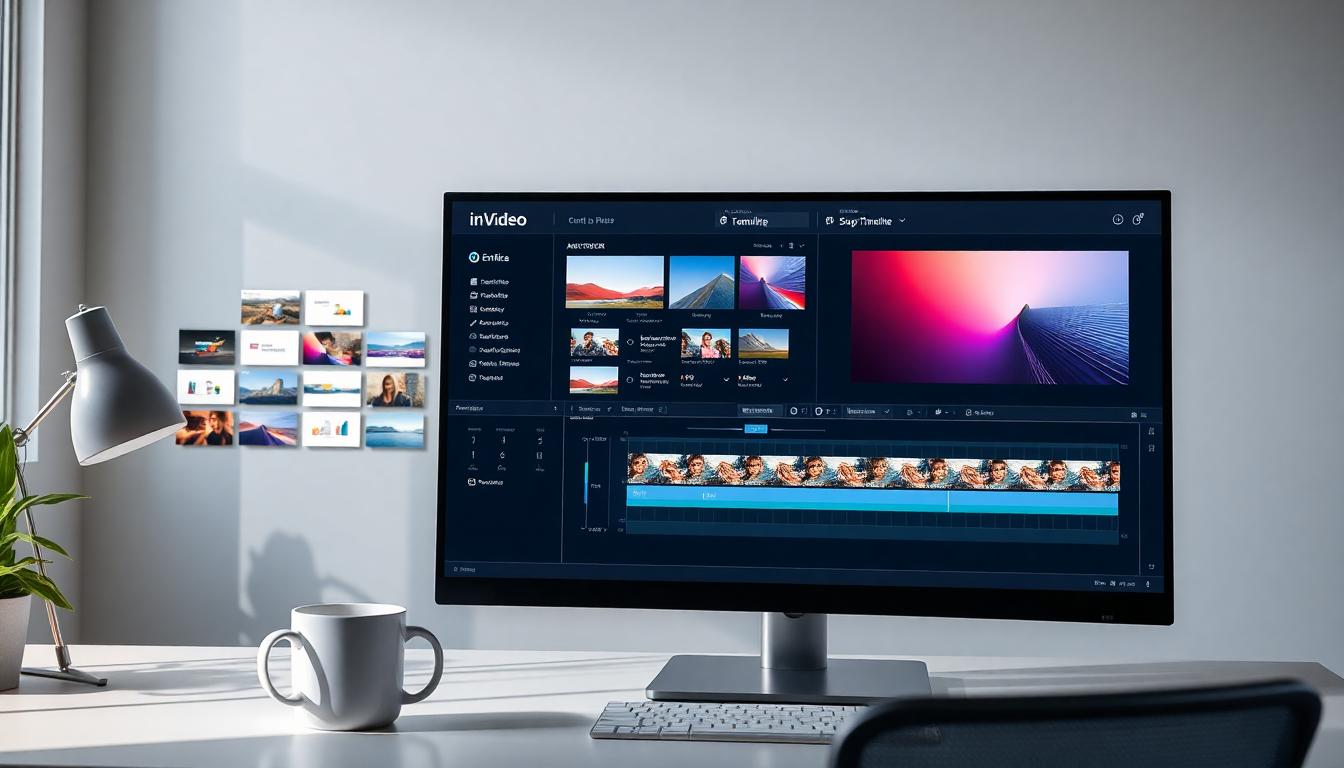
If Synthesia is your pocket presenter, InVideo is your creative studio on demand. This platform takes text, templates, and AI, and helps you turn ideas into scroll-stopping videos. With InVideo, you don’t need video experience or a big budget. You log in, pick a template, toss in your script, and get a video that’s ready for TikTok, Instagram, or your next client pitch—often in under 10 minutes.
Where does InVideo stand out in the “synthesia vs invideo” debate? Let’s break down how it works, who it’s for, and what you can (and can’t) do.
Text-to-Video with Massive Templates
InVideo is all about speed, options, and flexibility. You start by selecting from thousands of pre-built video templates organized by category and platform—think real estate reels, YouTube intros, Facebook ads, or explainer videos. The template library is simply huge, with options for just about any business or social use case you can imagine.
Once you pick a template, you paste in your script or use InVideo’s built-in AI to help create one. The platform suggests images, video clips, and music to match your message, pulling from a gigantic built-in library of media assets. No need to hunt for the perfect stock footage or track—InVideo does the heavy lifting.
Here’s what you get with each project:
- Instant drag-and-drop customization
- Huge selection of royalty-free images, video clips, and soundtracks
- AI-assisted script writing and scene creation
- Direct export to social platforms or for download
If fast, branded video content is your goal, this workflow really hits the spot. To see more about how this system compares to other creative AI tools, you can find a deep dive in this Runway AI review 2025, another leader in AI video creativity.
AI Voice Cloning and Audio Features
InVideo has taken a big leap by adding AI voice cloning. Want to narrate a video with your own voice, but hate re-recording every edit? Upload a short sample, and InVideo clones your tone, style, and accent. You can even use it across multiple projects.
Not only is this great for solo creators who want authenticity, but it also gives businesses a way to keep all their video content sounding personal—even at scale.
- Voice cloning tool: Just upload 30 seconds of audio to get started (see how it works here).
- Option to generate lifelike AI voices for narration
- Full control over background music, sound effects, and automated captions
This audio power means your videos can feel branded, consistent, and unique—no robot voices needed unless you want them.
Editing, Customization, and Creative Freedom
Unlike platforms locked to talking head videos, InVideo is pure creative playground. You get a timeline editor for:
- Adding text overlays, animated stickers, and transitions
- Switching media or colors to match your brand
- Adjusting timing scene by scene for just the right pacing
- Generating scenes automatically from scripts, or building everything from scratch
You’re not limited by corporate avatars or static designs. Everything is easily changeable, so your video doesn’t just look good—it looks fresh, on theme, and made for your audience.
Target Users: Who Is InVideo Best For?
So, who’s all this for? InVideo is a favorite among:
- Solo creators and influencers looking to stand out
- Small to mid-sized businesses with regular video needs
- Marketers crafting ads, reels, promos, or explainers fast
- Social media managers batching daily or weekly content
If you want a humanlike AI presenter for heavy training or internal videos, you might feel limited—InVideo doesn’t do full AI avatars. Instead, it’s built for people who want maximum creative flexibility.
Pricing and Plan Options
InVideo’s pricing is clear and flexible. Whether you want a free plan for testing or need pro-level exports, you can ramp up or down without surprises. The paid options unlock higher video resolution, white-label branding, and more stock media.
Check the InVideo pricing page for details on current plans, but here’s a snapshot:
- Free plan: Watermarked exports, basic features, smaller media library
- Paid plans: High-resolution videos, millions of assets, no watermarking, commercial rights
For creators, startups, or marketers, the cost is much more approachable than most corporate-centered platforms.
At a Glance: InVideo’s Place in the AI Video Landscape
Let’s make this simple. Compared to other AI video makers, InVideo is:
- Template-focused: Pick a look, drop in content, publish it in minutes
- AI-enhanced: Automates media selection and script-to-video
- Flexible: Edit almost anything, with no design limits
- Affordable: Transparent pricing with a robust free tier
But there are no AI avatars presenting your script on camera—you bring your own voice, or use text, images, and graphics to tell your story.
The bottom line for creators weighing synthesia vs invideo? InVideo gives you a powerful, flexible toolset for quick, creative social and marketing videos, without being tied to the presenter style.
For even more on how InVideo’s AI tools stack up compared to other voiceover and video automation apps, you might want to read this Murf AI review 2025 for a closer look at AI voice innovation in video production.
Synthesia vs InVideo: Feature-by-Feature Comparison
When you stack up Synthesia vs InVideo, it’s clear both platforms have different strengths. Deciding which is better for you really comes down to how you want to build videos, how much control you want over customization, and what your top priorities are—consistency, speed, branding, or creative flexibility. Let’s walk through each critical feature so you can see how they measure up side by side.
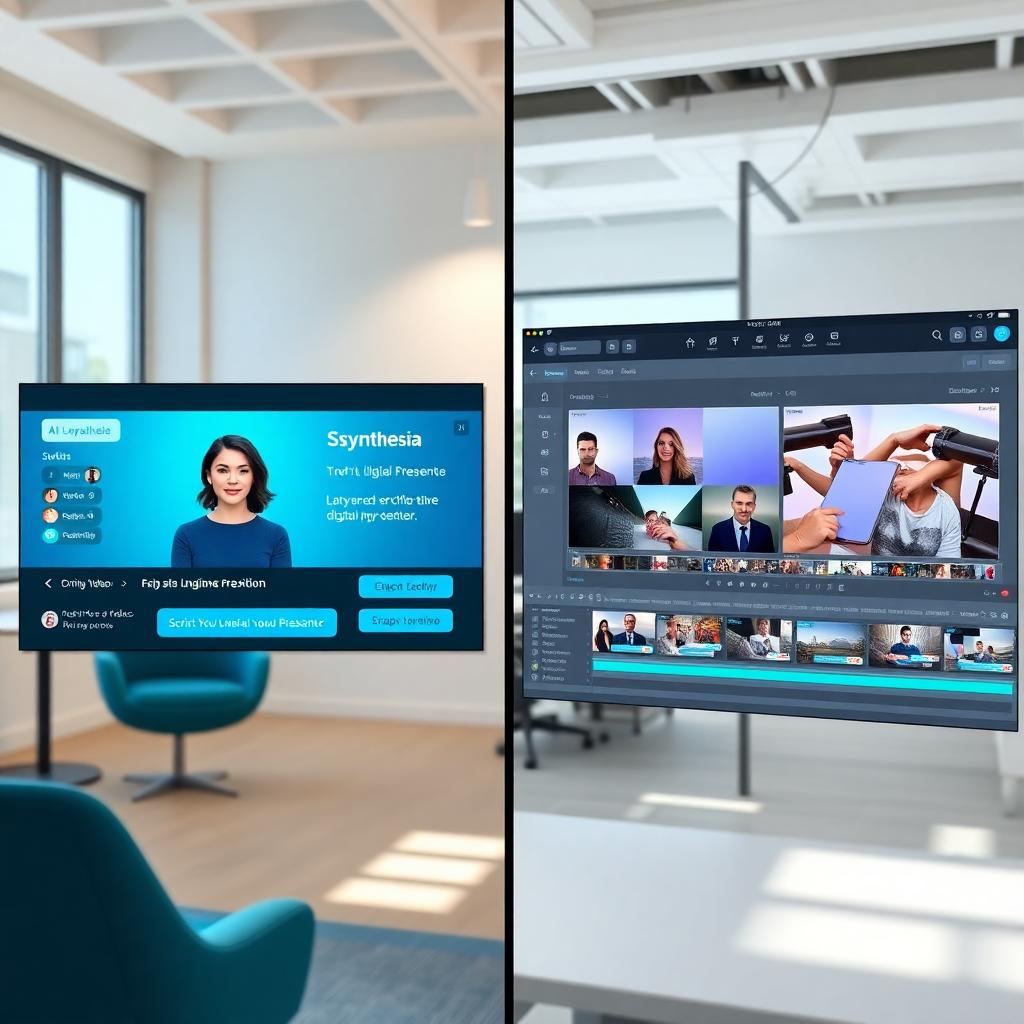
Image created with AI
Video Creation Workflow and Ease of Use
Both Synthesia and InVideo simplify video creation, but their workflows feel very different.
- Synthesia is all about script-to-video speed with an AI presenter. Here’s the usual flow:
- Paste your script, pick an avatar, and select a language (over 130 supported).
- The platform turns your words into a polished talking-head video, syncing the AI avatar’s voice and movement.
- Minimal editing is needed—revisions are smooth, often just swapping the script or avatar.
- Export your finished video for LMS, internal use, or download—formats suit training, onboarding, and internal comms.
- Synthesia’s interface is clean, beginner friendly, and made for anyone who wants reliable, presenter-style output without a steep learning curve.
- InVideo operates more like a creative video editor with marketing in mind:
- Start with a huge template library (over 7,000 options for every platform or campaign).
- Drop in your script or idea, and let the AI suggest scenes, stock footage, music, and even voiceovers (including voice cloning).
- The timeline editor supports drag-and-drop for images, clips, stickers, and custom text. You get more granular control over every scene.
- InVideo Studio gives experienced users advanced manual editing, while InVideo AI automates much of the process for quick results.
- Direct publishing to social media is built in. Recuts for different formats are quick and easy.
Beginners usually get up and running faster on Synthesia—no distractions or confusing menus, just script, avatar, and export. Experienced marketers and creators love InVideo for its creative potential, editing options, and branding flexibility.
If you want a full breakdown comparing actual feature sets, check out the up-to-date feature list between Synthesia and InVideo here.
Output Quality and Customization Options
Here’s where the difference really pops. Output quality isn’t just about pixel count—it’s the whole package: visuals, style, and control.
![]()
Image created with AI
Key Customization & Output Points
- Synthesia:
- Polished, uniform “talking head” videos with lifelike AI avatars.
- Over 200 diverse avatars + custom digital twins for on-brand presence.
- Realistic voiceovers, with expressive tone and emotion, in 130+ languages.
- Limited to presenter-style output; strong for scenarios needing consistency (onboarding, compliance, global announcements).
- Integrates securely with LMS and business platforms, trusted by large enterprises.
- New features: Advanced interactivity (build branching scenarios), more avatar control, direct PowerPoint-to-video, API automation.
- InVideo:
- Massive template gallery for marketers, educators, influencers, and brands.
- No AI avatars—instead, you use text, media, voiceovers (AI or cloned), and full creative control over each aspect.
- Supports square, landscape, and vertical formats; perfect for social and ad videos.
- Extensive stock media and music library.
- Manual timeline editing: tweak color schemes, transitions, effects, pacing, and timing per scene.
- Voice cloning, AI-driven scene creation, and improved voice quality in 2025 updates.
When Should You Choose Each?
- Synthesia is best when:
- You need “face of the brand” consistency.
- Multilingual support is non-negotiable.
- Security matters (for regulated industries, compliance, or internal comms).
- Speed and ease matter more than heavy creative edits.
- InVideo is best when:
- You crave design freedom and want to change every detail.
- Fast social, ad, or promo videos are your bread and butter.
- Large content batches need to follow brand guidelines but not a fixed template.
- You want lots of formats, media, and AI-powered creativity at your fingertips.
Here’s a quick-glance features table:
| Feature | Synthesia | InVideo |
|---|---|---|
| AI Avatars & Voice | Yes, 200+, deep language support | No avatars, AI voice & cloning |
| Template Library | Limited (presenter-focused) | 7,000+ templates |
| Customization | Script, avatar, voice, minor edits | Deep editing: colors, media, text |
| Manual Editing | Minimal, fast script-to-video | Detailed, timeline-based |
| Best For | Training, onboarding, compliance | Marketing, social media, ads |
| Security & Integrations | Enterprise-grade (SOC 2, GDPR) | Integration with all major platforms |
| New Features 2025 | Interactivity, API, PPT import | Generative AI, asset creation |
For more details and up-to-the-minute opinions from people using these tools daily, you’ll find real-world comparisons and screenshots in this 2025 user review roundup.
The takeaway? Synthesia is your choice for “consistent spokesperson on camera” and corporate polish. InVideo is your playground for branded, creative content that flexes to every campaign. If you need detailed side-by-side insights, you might enjoy the deep-dive at Zebracat’s 2025 comparison as well.
Best Use Cases: Which Tool Fits Your Needs?
![]()
Image created with AI
Choosing between Synthesia and InVideo really depends on what you want out of your videos. Maybe you need a reliable “face of the brand” across dozens of languages, or maybe you want the freedom to play with vibrant templates, music, and bold visuals for fast social campaigns. Here’s how each tool shines in the real world—and the kind of projects where you’ll get the most value for your investment. Let’s break down the best fit for common scenarios.
Company Training and Multilingual Consistency: Synthesia’s Strongest Suit
If your company lives or dies by professional training, clear onboarding, or regular compliance updates, Synthesia’s avatar-driven videos are tough to beat. You get a polished presenter who’s always on-brand—no matter how many languages you need. This keeps things easy to update, uniform, and free from the hassle of re-shooting content every time a script changes.
Why Synthesia works here:
- No need for a film crew or outside presenters
- Instant translation and voiceovers for 120+ languages
- Fast script replacements when policies or guidelines change
Practical example:
A global HR team rolls out a safety training series in 10 regions, all using the same professional-looking avatar so every employee gets the same clear message.
Pros:
- Consistent delivery, even for sensitive or legal topics
- Easy localization for international teams
- Secure for industries with compliance needs
Cons:
- Less flexibility for wild creative visuals
- Presenter format can feel repetitive for entertainment or hype content
Curious about what it looks like in the wild? Check out the detailed feature breakdowns and team use cases in this 2025 Synthesia vs InVideo comparison.
Fast Marketing Videos and Social Content: Where InVideo Wins

Image created with AI
For marketing teams or solo creators who want videos quick, in every format, and tailored for every audience, InVideo is like a creative playground. The huge template library, drag-and-drop controls, and AI scene suggestions mean you can turn around a whole batch of videos before your coffee cools.
Why InVideo works here:
- Thousands of templates sort by platform, campaign, or style
- Easy customization for brand colors, fonts, and graphics
- Direct export to social channels with optimized ratios
Practical example:
A small agency spins up five ad variations for Instagram, TikTok, and YouTube all from one brief—fine-tuning each for platform and message without starting from scratch.
Pros:
- Supreme flexibility for social content and marketing
- Quick adaptation for trends or last-minute campaigns
- Playful, modern look with easy-to-use features
Cons:
- No on-screen AI avatars; if you need a talking presenter, you’ll need to record your own or use voiceover
- Higher learning curve for users new to video timelines
Want deeper expert takes and more scenarios? Dive into the full SoftwareAdvice head-to-head comparison.
Projects that Need Pure Creative Control: InVideo’s Timeline Editing
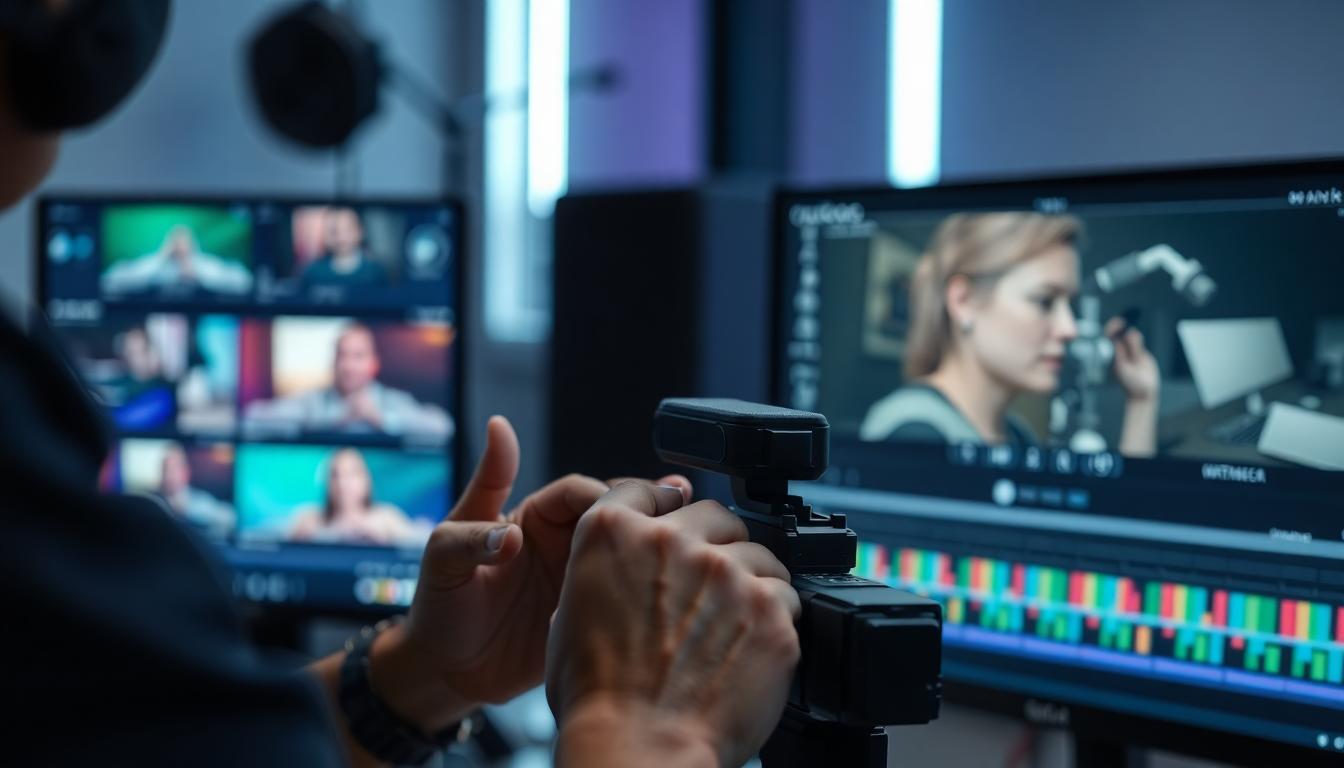
Image created with AI
Not every project fits into a single style. If your team loves playing with motion graphics, experimenting with color, or crafting unique stories scene by scene, InVideo’s granular timeline editor puts you in the pilot’s seat. Each scene can be tweaked, rearranged, or totally rebuilt until you hit the right vibe.
When to choose InVideo’s creative controls:
- Demo reels or product launches that need lots of motion and color
- Moments when brand identity matters more than a script
- Visual explainer videos for startups or product teams
Pros:
- Scene-by-scene pacing for storytelling flow
- Total design freedom, including animated effects
- Massive media library for backgrounds, overlays, and music
Cons:
- Creative control can lead to “decision fatigue” if you crave simplicity
- Not ideal for standard corporate updates or legal-heavy topics
Expand your toolkit by checking real-world results and hands-on reviews in this Fahimai detailed comparison.
Enterprise Content and Regulated Industries: Synthesia for Scale
If your company needs video at scale and has to meet strict rules on privacy, consistency, or auditability, Synthesia pulls ahead. It’s designed with features that help large organizations manage, update, and secure video libraries as easily as updating a slide deck.
Why large teams trust Synthesia:
- Robust content management for hundreds of modules
- Integration with learning systems and high-level security
- Audit trails and easy updates for compliance
Pros:
- Predictable, repeatable workflows
- Supports documentation for regulated sectors
- Easy language changes for global compliance
Cons:
- Monthly or annual contracts suit large teams, but may not fit small-batch creators
- Less “viral” style appeal for consumer-facing campaigns
For more examples on enterprise scenarios, the SlideSpeak in-depth feature review has plenty of use cases drawn from large-brand deployments.
Quick Reference Table
Here’s a simple table to sum things up:
| Use Case | Pick Synthesia | Pick InVideo |
|---|---|---|
| Onboarding & Compliance | ⭐⭐⭐⭐⭐ | ⭐ |
| Multilingual Corporate Training | ⭐⭐⭐⭐⭐ | ⭐⭐ |
| Fast Social & Ad Content | ⭐ | ⭐⭐⭐⭐⭐ |
| Creative Product Launches | ⭐⭐ | ⭐⭐⭐⭐⭐ |
| Regulated Enterprise Video | ⭐⭐⭐⭐⭐ | ⭐⭐ |
| Vivid Design Freedom | ⭐⭐ | ⭐⭐⭐⭐⭐ |
You can also browse even more scenarios and scoring rubrics in this comprehensive Wavel feature comparison.
The Bottom Line: Find Your Fit
Here’s how to make the decision simple:
- Pick Synthesia if you need a reliable, presenter-led video at scale in lots of languages.
- Choose InVideo if you want freedom to experiment and push content out across lots of platforms, fast.
For a broader take on how other teams made the choice, have a look at the real-world breakdowns and user stories in this Synthesia vs. InVideo guide.
When it comes to synthesia vs invideo, keep your project goals, team skills, and type of content top of mind. The best tool is the one that fits both your vision and your workflow.
Pricing and Value for Money
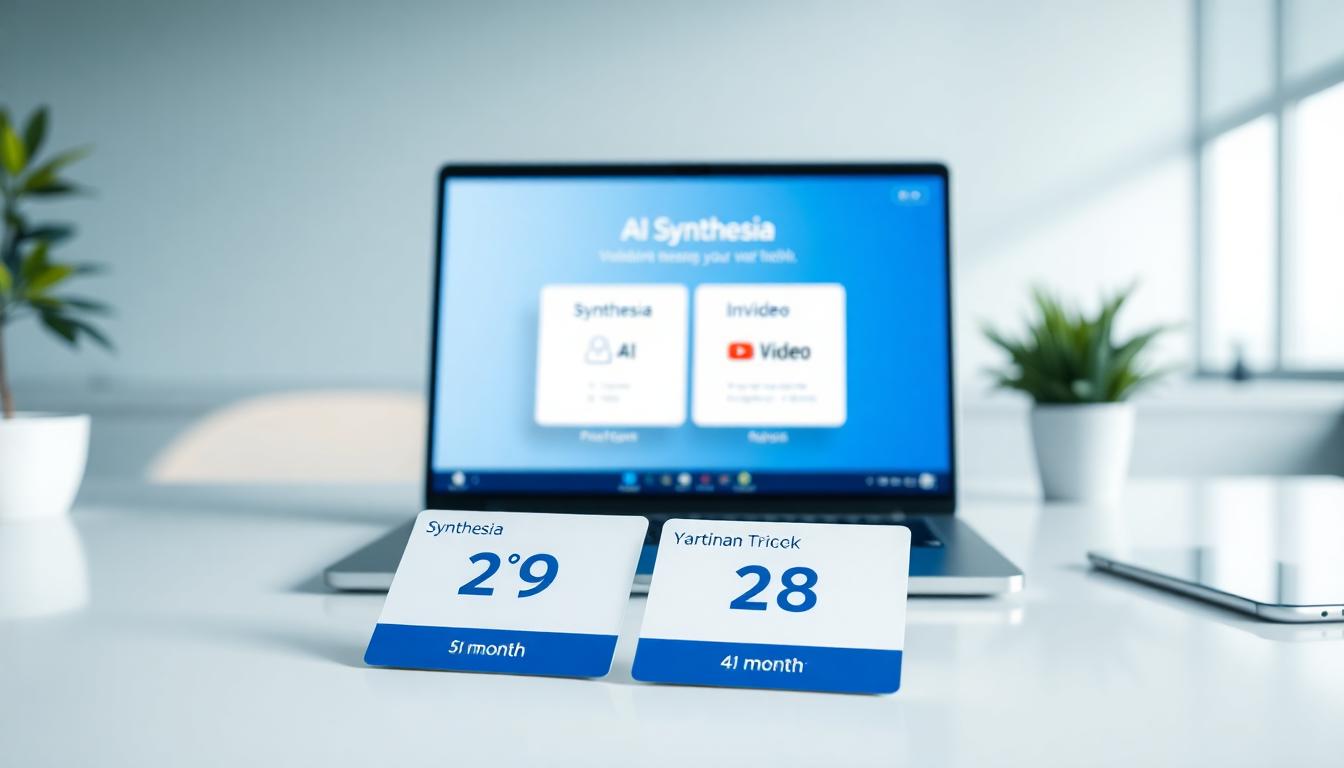
When you look at the battle of synthesia vs invideo, cost often comes up right after features. Nobody wants to pay top dollar for a tool that feels limiting—or worse, one that’s bloated with stuff they’ll never use. Instead, the goal is real value: paying for what makes your work smoother, your content more effective, and your ROI easy to justify. So, how do Synthesia and InVideo stack up when it comes to pricing and what you actually get for your money?
Synthesia Pricing Overview
Synthesia sits on the higher side of the AI video market, and for good reason: it’s packing some serious tech under the hood. The base plan starts at about $29 per month (billed yearly), which covers access to the AI avatar video tool, a good selection of stock avatars, and unlimited access to most script-to-video features. Need something more custom, like your own branded digital twin or extra admin controls? The price climbs into enterprise territory, where you’ll chat with their sales team for a quote.
- Entry point: $29/month, paid yearly
- Who’s it for? Businesses, learning and development teams, HR departments, or any org that needs consistent, multilingual video at scale.
- Custom avatars and white labeling are in the pricier plans, best suited for companies with advanced branding needs.
Synthesia doesn’t offer a fully free plan. You’ll usually see options for a short demo or a limited free trial, but to export real, usable content, you’ll need a paid account. You can compare features head-to-head with InVideo on their official comparison page.
InVideo Pricing Overview
InVideo is all about flexibility and affordability. Plans start at around $28 per month (billed yearly), and here’s the catch: there’s a totally free option too. You get watermarked exports and a smaller media library if you stick to free, but it’s more than enough to test out the platform or crank out the odd video here and there.
- Free plan: $0, with watermarks, basic templates, and core editing features.
- Paid plans: $28/month unlocks high-resolution output, removes the watermark, and opens up premium stock assets and commercial licensing.
- Who’s it for? Marketers, small businesses, educators, content creators—anyone who needs video volume without a fat subscription.
InVideo’s pricing is easy to understand and lets you ramp up or drop down as your needs change. It appeals to power users and freelancers alike, offering extra tools (like voice cloning and advanced timeline editing) without locking them behind hard-to-reach paywalls. For a look at where InVideo stands among other AI video generators, you can visit this benchmark pricing review.
At-a-Glance Price Comparison Table
Here’s a quick price/features table so you can see it all in one place:
| Platform | Starting Price (Monthly) | Free Plan | Notable Features | Best Fit |
|---|---|---|---|---|
| Synthesia | $29 (annual billing) | Trial | AI avatars, 120+ languages, brand digital twins | Enterprise, HR, L&D |
| InVideo | $28 (annual billing) | Yes | 7,000+ templates, voice cloning, wide media library | Creators, marketers |
Value for What You Pay
The value you get from these platforms matches their pricing logic.
- Synthesia: The real draw is the ability to create presenter-led videos at scale, in almost any language, with a professional look every time. If multilingual training, onboarding, or policy videos are your main deliverables, Synthesia pays off by saving time on reshoots, translations, and editing. The investment makes sense when you need volume and brand consistency.
- InVideo: Here, the value is flexibility. You pay less up front and can still generate tons of branded, creative videos. The free plan means you lose nothing by trying it, while the affordable upgrade opens the door to high-quality exports and a sea of ready-made designs and stock content. If you want to experiment or need “just enough” customization, it often wins on value.
If you’re the type who likes to stack the choices side by side, the AI tools comparison guide can help you go deeper into costs, features, and user experiences with both tools.
Trials, Free Plans, and Upgrades

Both platforms use trials or demo credits to help close the deal. Synthesia offers limited pilots so you can see its avatar tech in action before signing up. InVideo gives unlimited time on its free tier so you can explore, but you’ll need to upgrade if you want to lose the watermark or export pro-quality videos.
Here’s what makes this matter: if you’re deciding between synthesia vs invideo, consider if you want to test things slowly (go with InVideo’s free plan) or jump in for a focused trial (take Synthesia’s demo for a spin). Each model lowers your risk in different ways.
If you still have questions about how AI video tool pricing breaks down or what’s in each plan, you’ll find more answers in our roundup of common questions about AI tools we answer.
Bottom Line: Pay for What Fits Your Goals
Synthesia rewards teams or brands that need polished, consistent, scalable presenter videos, especially in regulated or global settings. InVideo rewards creators who want lots of options and freedom without breaking the bank—or who just want a quick, risk-free start.
Choosing comes down to knowing your most frequent projects and what gaps you need to fill in your workflow. Most teams find the right value match by lining that up with either affordable flexibility (InVideo) or reliable consistency (Synthesia). If you like digging into specs, comparisons, and real user reviews, the up-to-date Invideo vs Synthesia feature and pricing breakdown offers the fine print without the marketing fluff.
Synthesia vs InVideo: Which Is Better for 2025?
Picking between Synthesia and InVideo in 2025 means thinking about your goals, your style, and your budget. Synthesia is known for lifelike AI presenters, while InVideo is a toolkit for creative, on-brand videos at high speed. You’ll want to figure out where you fall—do you need uniform, scalable video for business, or do you want room to flex your design muscles? Here’s how these two shape up and who should choose which.
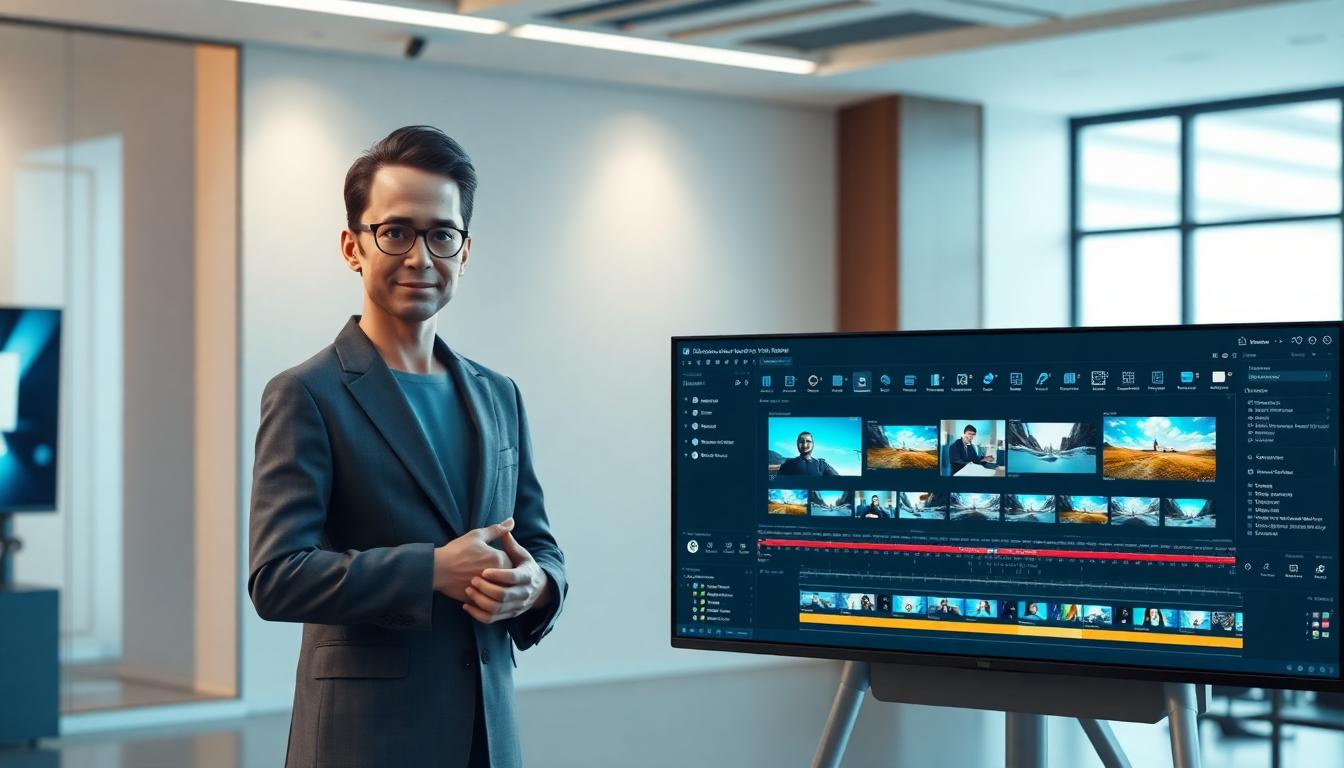
Decision Factors: What Should You Look For?
Choosing the best AI video tool is like picking shoes—it depends on where you’re going and how you want to get there. Some teams want a clean, professional look every single time. Others want new styles, social formats, and fast edits. Here are the main reasons you’ll prefer one over the other:
- Audience: Do you need to impress clients, train employees, or boost your brand on social?
- Project Volume: Will you be doing the same kind of video over and over? Or do you need each project to look and feel unique?
- Customization: Do you need maximum creative freedom, or do you want most choices made for you—quickly and reliably?
- Language Support: Is multilingual output key, or is English enough for your team?
- Budget: Does your organization support a premium tool, or do you need a powerful free or budget-friendly option?
Who Should Choose Synthesia?
Synthesia is best for companies or training departments that need clear, face-to-camera communication without hiring video staff or on-screen presenters. When you want every video to have a consistent “face of the brand,” Synthesia delivers:
- Presenter-led training and onboarding in dozens of languages
- Compliance, policy, or procedural updates that need to look the same across countries and years
- Secure, scalable video creation for internal teams or regulated sectors
If you’re trying to replace old-school talks, briefings, or e-learning with something smoother and more modern, Synthesia excels at this. It automates the busywork while delivering a professional, human look. Need even more reasons? Have a look at this clear Synthesia vs. InVideo 2025 comparison for feature-by-feature breakdowns that dig into the matching pain points and workflows.
Who Should Pick InVideo?
InVideo is made for creators, marketers, educators, and agencies who want design freedom and speed at the same time. You’ll love it if you:
- Want to publish fast, fresh social videos and ad content using thousands of templates
- Need to experiment with different styles, platform formats, and creative options for each project
- Prefer drag-and-drop editing, flexible layouts, and lots of media at your fingertips
- Want a free plan to test or a lower-cost upgrade path as your needs grow
InVideo lets you play with color, fonts, motion, and structure, which is key for standing out online or running lots of campaigns. New features like AI voice cloning make it even more flexible for single-person brands and small teams. For more side-by-side feedback from working creators, the reviews at SoftwareAdvice’s head-to-head Synthesia and InVideo breakdown give real-world insight into what to expect from each platform.
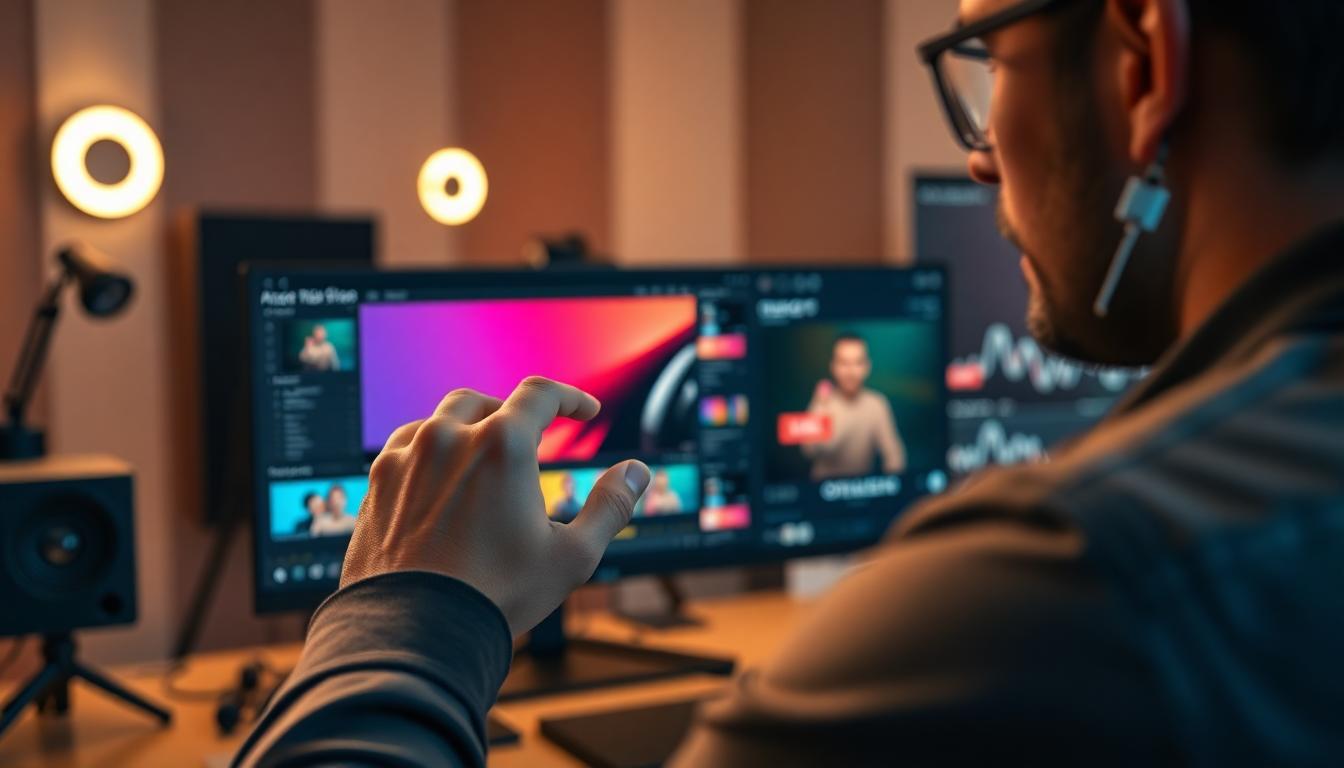
Bottom Line: Match Your Needs, Then Decide
There’s no single right answer in the synthesia vs invideo debate. Each one shines for a different kind of user and project. If you want a recruiter-perfect video, identical every time for every location, go Synthesia. If you like to change things up and create lots of content without limits, head to InVideo.
You can dive even deeper with this in-depth article comparing both tools for 2025, or get a clear visual rundown at SlideSpeak’s comparison page. Making your shortlist is easier when you know exactly what kind of video you need next.
In the end, the best tool is the one that lets you create videos your way—on time, on brand, and without a hassle.
Conclusion
There’s no single “winner” in the synthesia vs invideo debate. The right choice depends on what matters most to you. Synthesia shines for consistent, presenter-led videos and is great if you need professional, scalable training or internal content. InVideo is ideal if you want creative freedom and fast, branded marketing videos with deep customization and countless templates.
Still unsure? Kick the tires—try InVideo’s free plan or take a Synthesia demo and see which platform feels right. For more practical guides, feature comparisons, and expert tips on AI video tools, check out additional resources on choosing the best fit for your content needs. Your workflow, creative goals, and audience should always steer your pick. Whichever you choose, you’ll be working with some of the strongest AI video makers available today. Thanks for reading, and if you’ve found your favorite, share your results or questions below!

















